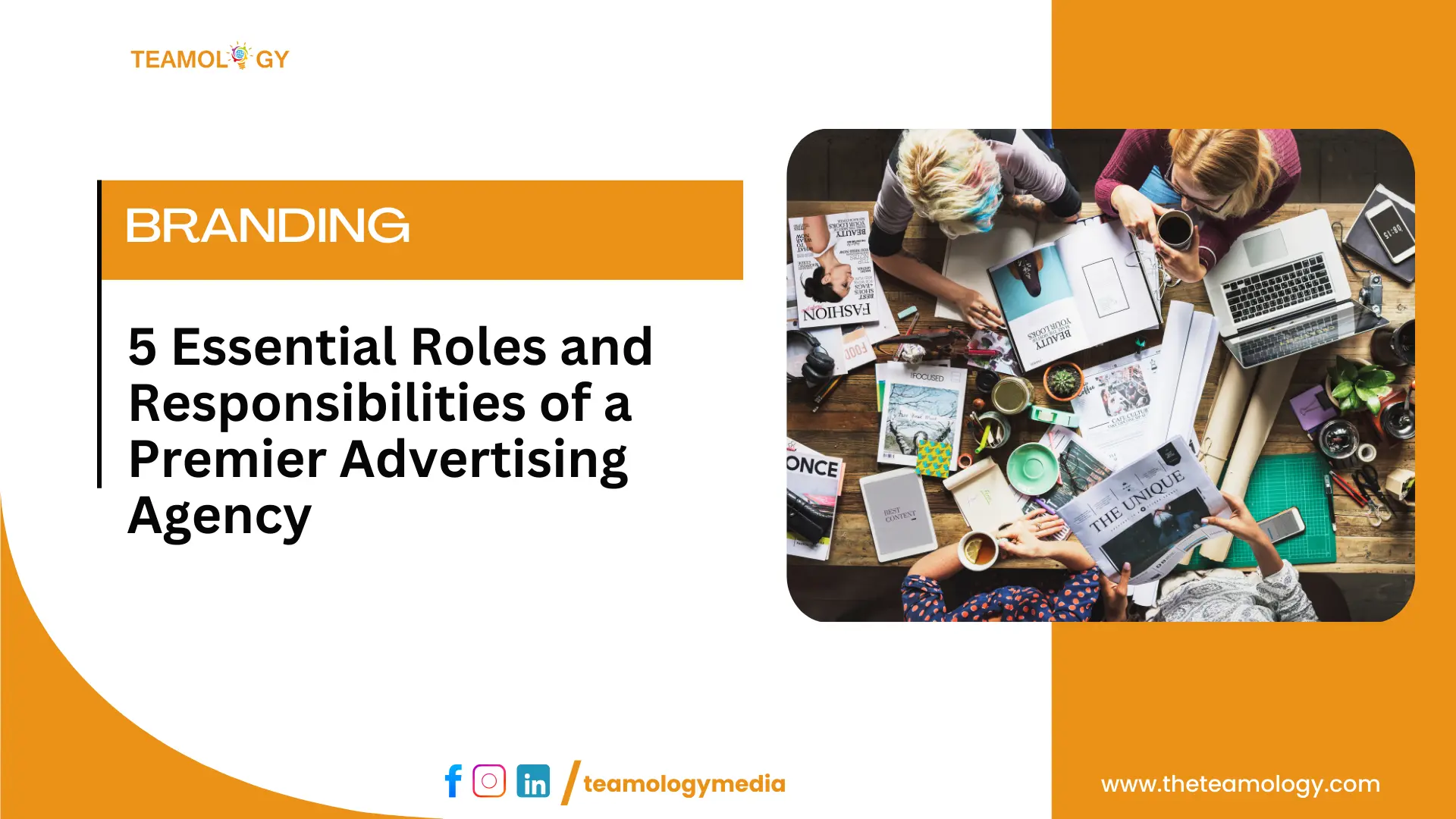Introduction
We all grew up watching ads on TV or mobile! Some ads left lasting impressions, while some made us sick and tired, forcing us to skip them. But what exactly is advertising in the first place? Businesses use Advertising as a medium to convey messages related to their products, services, or ideas to persuade potential customers to take some action. Actions may be buying a product or changing their perspective about a brand or something else. Mediums can be traditional channels like TV, radio, billboards, or digital like Google or social media ads. Advertising agencies are the creative force behind these ads.
However, an ad agency’s responsibility goes beyond catchy jingles and visuals! The roles in an advertising agency also include market research, strategic planning, campaign launch, and performance analysis. In this blog, let’s unpack the details about the various advertising agencies functions that these ad agencies perform.
What are the 5 Roles of an Advertising Agency?
1. Market Research and Audience Insights
The first and foremost step in meeting any marketing goal is to conduct market research. Market research can provide data related to marketing trends, consumer behavior, business competitions, and more, helping businesses tailor their promotional content to resonate with audience preferences. Advertising agencies conduct this research through surveys, social listening, and analyzing consumer buying patterns. The importance of this phase is such that skipping or ignoring this may bring the entire ad campaign to disaster.
In today’s era of personalization, audience segmentation has emerged as a new and critical facet. So today’s ad agencies group their target audience based on different demographic factors. For example, a fashion brand might target young adults with trendy collections while a luxury brand may seek the attention of affluent consumers with exclusive items.
2. Strategy Development for Ad Campaigns
By collecting data through market research, the advertising agency can realize the real purpose of its campaigns. There can be multiple goals to an ad campaign – boosting sales, building brand awareness, lead generation, increasing web traffic, and more. Insights about the target audience from market research allow the ad company to know exactly what kind of ad it needs to create so that the campaign can make the highest impact. Naturally, these are SMART goals, ensuring they are specific, measurable, achievable, relevant, and time-bound for precision and workability.
3. Creative Development
The primary duty of an ad agency is to create impactful ads. However, the ad-creation process begins with an idea. How do these agencies acquire these ideas? The answer is – market research. It’s a valuable tool that makes insights on products and target audiences available to these ad agencies. This sets the tone of the ad, whether hilarious, entertaining, or emotional. Let me give you examples of two iconic ads in the history of India’s TV commercials.
Amul – The test of India: this timeless TV ad stole the hearts of every Indian with its humorous tagline-“Utterly Butterly Delicious” with a comic picture of a little Amul girl. Even now, after decades have passed, the mascot and the tagline continue to flash in our minds every time we think of Amul butter.
Another one is Hamara Bajaj – Bajaj scooter’s “Hamara Bajaj” jingle, which once symbolized the entire Indian middle class. The memorable ad successfully celebrated the spirit of India, prompting middle-class Indians to take pride in Indian brands. The epic jingle resonating with national identity perfectly illustrates a unique blend of creativity and emotional bonding.
Even in today’s digital age, companies like Swiggy and Zomato are winning Indian souls with their visually appealing social media ad campaigns, symbolizing today’s fast-paced lifestyle.
Therefore, public sentiments and creativity are the two mantras of making successful ads. Ads come in three formats – text, audio, and video. When it comes to channels then traditional media like TV, radio, newspapers, posters, and billboards are already in place, with the latest addition of modern-day digital ads like social media/search engine ads giving brands a holistic reach like never before.
4. Media Planning and Buying
Media planning is a critical phase in advertising that determines the best channels and times to distribute the ad to the intended audience. For example, say the marketing firm is attempting to launch a promotional campaign for a Generative AI course. In such a case, the firm will first do research on the most popular platforms among students and professionals, such as Facebook, Instagram, and LinkedIn. They will also try to determine the optimal timing and formats for the advertisement. For example, live webinars or educational videos may provide greater outcomes at a specific time of day. These are made in video format.
After media planning comes media buying, where the agency buys ads on numerous platforms according to predetermined budgets. For example, if social media posts, Google ads, or YouTube pre-roll ads are purchased, then it guarantees that the ad is reaching the right audience. At the time of media buying, ad agencies make decisions based on rates, timing, and placements of the ads.
After all, media planning and buying work in tandem to engineer a successful campaign, helping brands meet demand by delivering the right message at the right time and to the right audience.
5. Bringing Campaigns to Life: Execution and Analysis
Once strategy, media planning, and creative development are complete, the process of launching the ad campaign begins. In this stage, ad agencies run campaigns on the designated platforms so that each ad resonates deeply with the audience and coincides with the core brand message.
Ad agency roles do not end with a campaign launch. They also play crucial roles in measuring their performance. After advertisements are launched, ad agencies conduct performance data tests on social media, such as engagement rate, click-through rate, and other metrics, to determine how effectively the ad is influencing the audience. If necessary, they may make changes to the message, position, or visual content of the ads to improve their effectiveness.
After the campaign, a thorough study is conducted. It assesses the campaign’s performance by examining several KPI such as conversion rate and brand awareness growth. This analysis allows agencies to build more successful future campaigns.
Conclusion: Ad Agencies are Indispensable for Business Growth
The function of an advertising agency extends beyond the creation of appealing advertisements to include market research, strategic planning, media selection, and campaign analysis. Businesses use advertisements to convey their message at the appropriate moment to the right audience, allowing them to develop a strong relationship with their customers. Ad agencies’ creative and strategic activities are one of the keys to corporate success, contributing to meeting business goals through innovation and implementation of new ideas.


